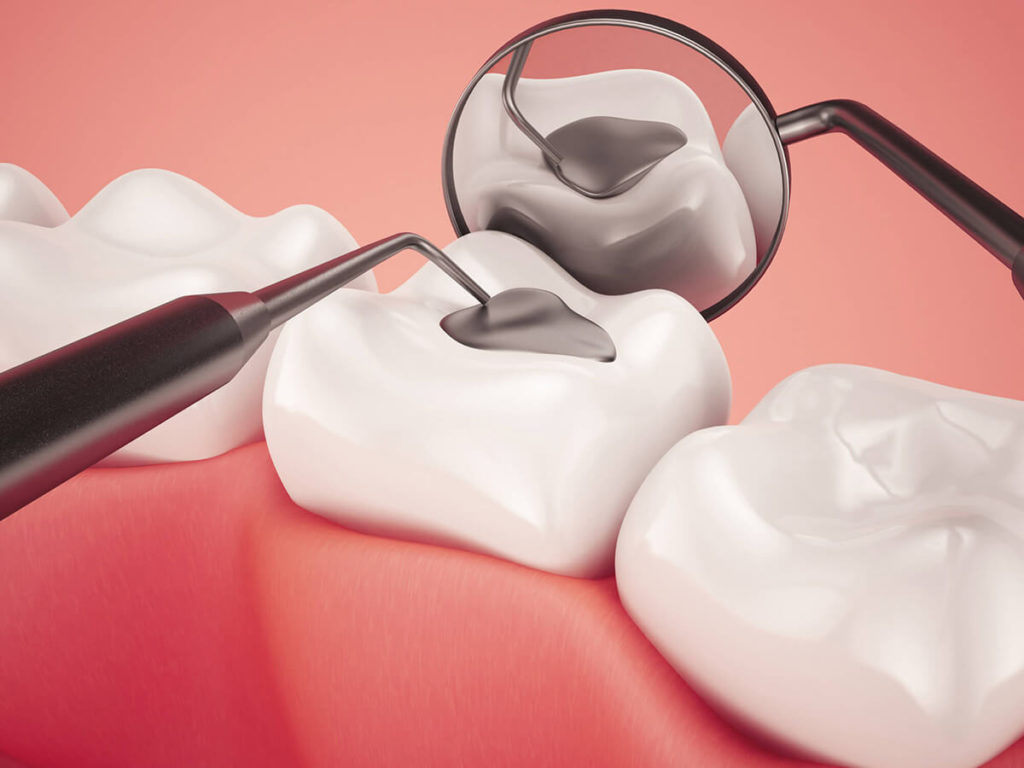Wanting to get Teeth Fillings near you?
If you are looking to get teeth fillings near you, it is likely that you have one or more cavities or damaged teeth that need to be restored. Teeth fillings are commonly used to treat tooth decay, cracks, or fractures by filling in the affected area with a dental material. Getting a tooth filling can help alleviate tooth pain, improve oral health, and restore the normal function of your teeth. It is recommended to consult with a dental clinic near you to determine the most suitable type of filling material and receive professional treatment tailored to your specific dental needs.
When do you need
Teeth Fillings?
Teeth fillings or dental fillings are typically needed in the following situations:
- Tooth decay
- Cracked or fractured teeth
- Worn-down teeth
- Chipped or broken teeth
- Tooth sensitivity
If you experience tooth pain, sensitivity, visible cavities, or any other signs of dental decay or damage, it is advisable to visit a dental professional in order to determine if you need teeth fillings or any other necessary dental treatment. Early intervention can prevent further complications and help maintain your oral health.

FAQ
A tooth filling or cavity filling is a dental procedure that involves the restoration of a damaged or decayed tooth. During this procedure, the dentist removes the decayed or damaged portion of the tooth and fills the space with a material to restore its shape, function, and strength.
Various materials can be used for tooth fillings, including amalgam (silver-colored fillings), composite resin (tooth-colored fillings), porcelain, and gold. The choice of material depends on factors such as the location of the filling, aesthetic preferences, and the extent of the damage.
Tooth fillings are a common and effective dental treatment to restore the form, function, and health of a tooth affected by decay or damage. Regular dental check-ups can help identify the need for fillings and ensure timely treatment.
There are several reasons why you might need to get a tooth filling or dental filling:
- Treatment of tooth decay: Tooth decay, caused by bacteria and plaque buildup, can lead to cavities or holes in the tooth structure. Fillings are used to remove the decayed portion of the tooth and restore it with a filling material, preventing further decay and preserving the tooth's function.
- Repair of chipped or cracked teeth: Teeth can become chipped or cracked due to various reasons, such as trauma or biting on hard objects. Fillings can be used to repair these damaged areas, restoring the tooth's structure and protecting it from further damage.
- Improvement of tooth sensitivity: Tooth sensitivity can occur when the tooth enamel wears down, exposing the sensitive dentin layer. Fillings can be used to cover and protect these exposed areas, reducing sensitivity to hot, cold, or sweet stimuli.
- Cosmetic enhancement: In some cases, fillings can be used for cosmetic purposes, such as filling in gaps between teeth or reshaping uneven or misshapen teeth. Tooth-colored fillings, made of composite resin material, can be used to achieve a more natural and aesthetically pleasing appearance.
- Reinforcement of weakened teeth: Teeth that have undergone root canal treatment or have large fillings may be weakened and prone to fractures. Fillings can be used to reinforce and strengthen these teeth, providing additional support and preventing further damage.
Getting a tooth filling is essential for maintaining oral health, preventing further tooth decay or damage, and preserving the natural tooth structure. It is important to address any dental issues promptly to avoid complications and ensure long-term oral well-being. Regular dental check-ups can help identify the need for fillings and allow for timely treatment.
There are several types of tooth fillings or permanent fillings of tooth available, including:
- Amalgam fillings: Amalgam fillings, also known as silver fillings, are made of a mixture of metals, including silver, tin, copper, and mercury. They are durable and long-lasting, making them suitable for filling cavities in back teeth.
- Composite fillings: Composite fillings are tooth-colored fillings made of a mixture of plastic and fine glass particles. They blend in with the natural color of your teeth, providing a more aesthetic result. Composite fillings are versatile and can be used for both front and back teeth.
- Ceramic fillings: Ceramic fillings, also known as porcelain fillings, are made of a tooth-colored ceramic material. They are highly aesthetic and resistant to staining. Ceramic fillings are often used for front teeth or visible areas of the mouth.
- Glass ionomer fillings: Glass ionomer fillings are made of a mixture of acrylic and glass powders. They release fluoride over time, which can help prevent further decay. Glass ionomer fillings are commonly used for children or in areas with low bite pressure.
- Gold fillings: Gold fillings, made of a gold alloy, are highly durable and can last for a long time. They are more expensive than other types of fillings and are often used for back teeth.
The choice of filling material depends on various factors, including the location of the filling, the extent of the decay or damage, aesthetic considerations, and your dentist's recommendation. Your dentist will assess your specific needs and discuss the options with you to determine the most suitable type of filling for your situation.
The cost of a tooth filling can vary depending on several factors, including the type of filling material used, the size of the filling, the location of the dental clinic, and the dentist's expertise.
To get an accurate cost estimate for your specific case, it's best to consult with a dentist in your area. They can assess your dental needs, provide a personalized treatment plan, and discuss the associated costs with you.

